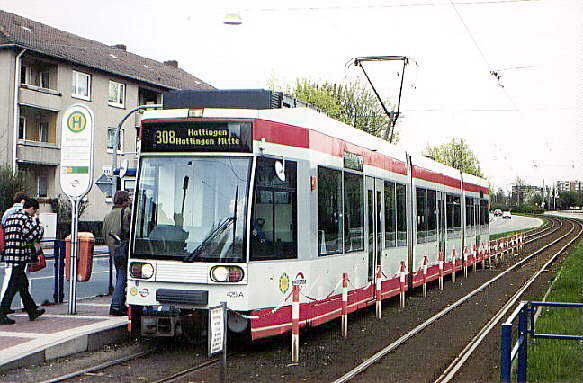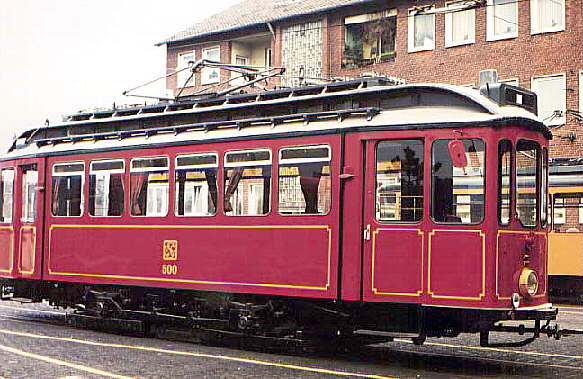
The Ruhr ("Ruhrgebiet" in German) is an industrial area in the western part
of Germany with more than 5 million inhabitants. In the Ruhr five light rail
systems have survived until today: Dortmund, Bochum-Gelsenkirchen, Essen,
Muelheim and Duisburg, and a sixth system, Oberhausen, has reopened in June 1996.. In addition the network connects with Krefeld and
Duesseldorf's light rail. Click here: to see a conceptual map of the Ruhr..
All these systems are included in a joint tariff area, the "Verkehrsverbund
Rhein-Ruhr" or VRR, where a single ticket is good for all public transport
modes except DBAG (German Railways) InterCity and express trains. The one-day
TagesTicket is a good bet for tourists and enthusiasts. It is valid for 5
persons (no age limit) plus one dog for a whole day. It is available
for one city (price-level A, 10.50 DM), for one city plus all the
cities around it (level B, 15.50 DM) or for the whole VRR-area (level
C, 29.50 DM). These prices are since 1.1.1998.

The following is a short description of each of the light rail systems in the Ruhr plus Krefeld and Duesseldorf.
